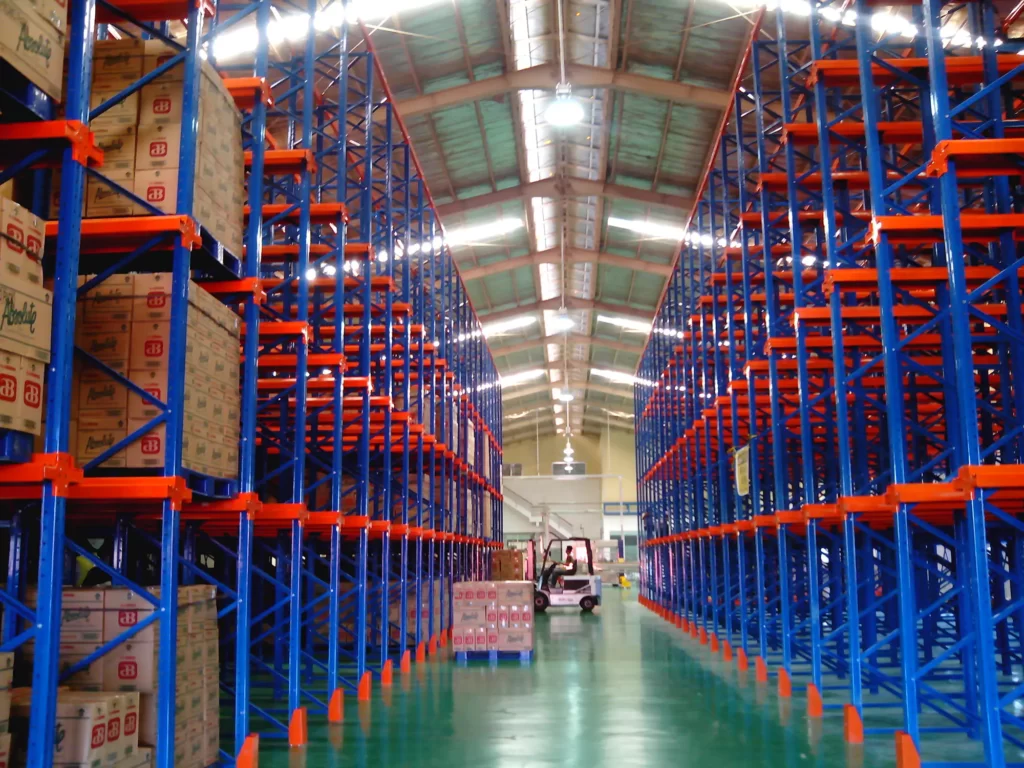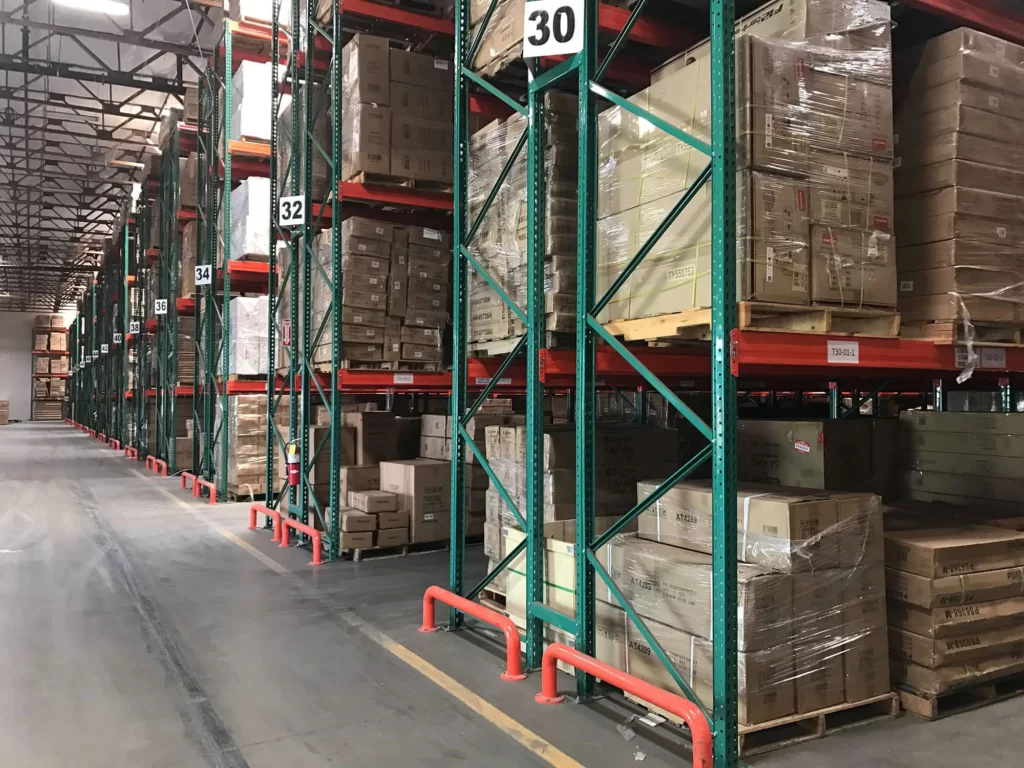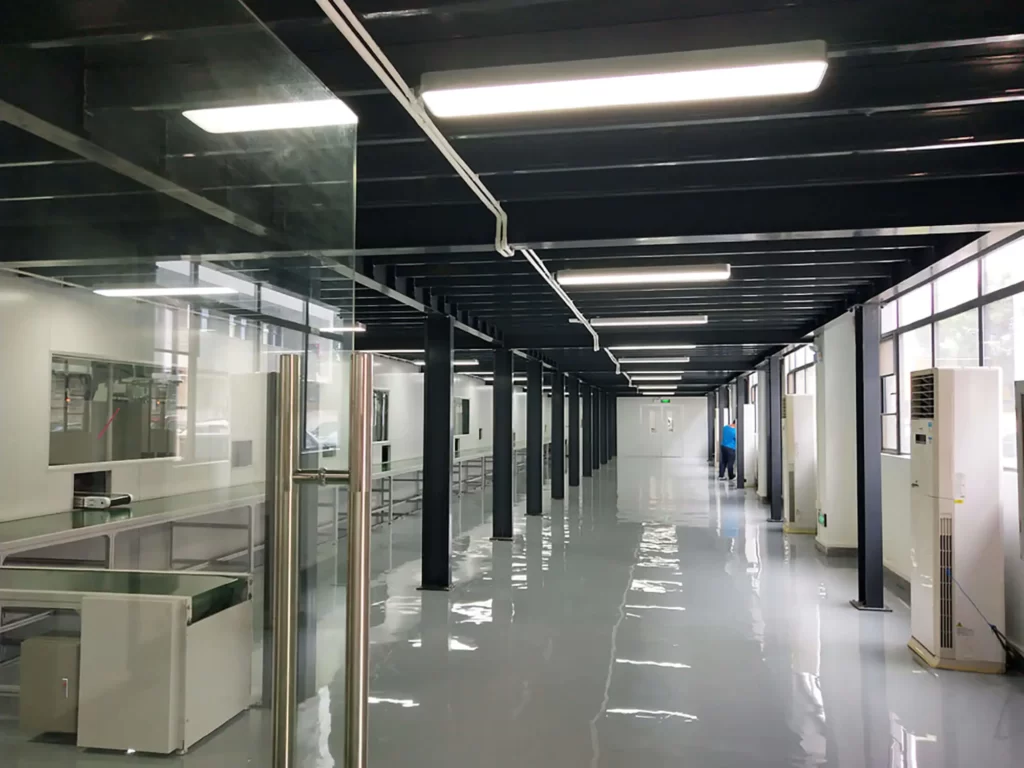The manufacturers require food storage before it gets to the market. In food storage warehouses proper food sanitation and maintaining health requirements are ensured. This maintenance helps to prevent the food from spoilage and harmful bacteria.
Right temperatures, optimized food storage, and preservation of nutrients in every food item are made in a food storage warehouse that requires experienced experts in the field. Every food storage warehouse is required to register with the Food and Drug Administration (FDA) for certifications and approved procedures and to fulfill standard food storage regulations.
Further in this article, we will be discussing food storage systems, challenges, requirements of this warehouse, and other important factors that should be considered for it.
So, let’s get started!
Designing a Food Storage Warehouse
A food storage warehouse is required to fulfill the specifications for each item. There are many considerations that should be met in order to ensure the safety of the food that is being stored. You need to consider the following aspects while designing a food storage warehouse:
Temperature Control
Food storage warehouses required controlled temperatures. The range of temperature changes with the type of food you are storing. In general, the food storage warehouses are kept within 0 to 4 ℃ for refrigerated items. Whereas, the cold rooms or freezers are kept at -18 ℃ for frozen items. These temperatures should be met according to the requirement of the goods being stored.
Humidity Management
Moisture in the food storage warehouse can create many issues. These issues may include mold growth, spoilage of food items, and condensation. Some food items require humidity that can be maintained for specific items. For instance, dry food products are stored at lower humidity levels, whereas, fresh food products are stored at higher humidity levels.
Ventilation
Ventilation is the key consideration within a food storage warehouse. Adequate airflow should prevail equally so that it will prevent odors buildup and the air quality index can be maintained. The ventilation system includes exhaust fans, vents, and a circulation system for airflow.
Pest Control
The most important controlling environment required for a food storage warehouse is the pest-controlling system. Pest-controlling practices should be added to the weekly schedule to prevent them. These practices may include regular inspections, and filling up cracks and gaps between racks, walls, and ceilings. Also, there is pest-resistant packaging that can be done and implementing pest management strategies.
Storage Layout
Warehouse designing includes warehouse layout design which is also important for food storage warehouses. Optimizing space utilization is necessary to access food items easily so that you can regularly inspect products. This can be done by installing a proper racking system, shelving, and labeling on account of organizing items well and effectively running warehouse operations.
Food Safety Standards and Security
Food safety standards should be met in order to make the warehouse hygienic. For such purposes, Hazard Analysis and Critical Control Points (HACCP) can be consulted to know about food safety standards.
Also, the food warehouses should implement security standards to avoid theft and most importantly there should not be any unauthorized access to anyone.
Food Storage Systems and Equipment for the Warehouse
In food storage warehouses, the storage system used should be according to the industry standards and fulfill temperature requirements in every aspect. For such purposes, the food industry uses a pallet racking system, and different material handling equipment options to store food items. There are various types of storage systems being used to store food. Let’s explore the perfect racking system for your all warehousing and storage requirements ahead.
Pallet Racking System for Food Storage
The most popular storage system used in warehouses is the pallet racking system. In this racking system, food items are stored on pallets using forklifts (if needed). These pallets are placed on the beams (which form storage levels). The forklifts can easily maneuver between the aisles because of the efficient racking system in the warehouse. So, it is possible to store and retrieve items when needed.
The expiry and spoilage of food items can be a challenge for warehousing but fear not! The pallet racking system gives the advantage of checking and balance of each product on a daily basis. You can do pest analysis and quality control of perishable items while maintaining a temperature control system in your warehouse.
Also, there are pallet racking systems for extreme temperatures that do not rust and are corrosion-resistant in humidity and extreme weather. In a food storage warehouse, the use of a temperature-controlled system is obvious, so you better choose the pallet racking system that is specifically designed for such conditions. Additionally, frozen items should be kept under extremely low temperatures which can be done if a proper racking system is installed for that area.
A food storage system typically uses a First-In-First-Out (FIFO) rotation system. In this system, it is made sure that the older products are sold out first (in order to avoid expiry or spoilage). Also, it helps to maintain the freshness of the food items. The FIFO rotation allows the stocking of new items at the end of the racking system and old items are pulled forward and they become ready to be retrieved first.
How Is the Pallet Racking System Beneficial?
The key benefit of using a pallet racking system is easy access to the items. The number of items being stored, size, and weight capacity is determined by the number of pallets that can be placed on the racks. Therefore, this racking system is flexible and easy to install and use.
Racking configuration is another advantage to meeting your requirements of storing items perfectly. The racking system offers configuration options in different ways which include selective racking, double-deep racking system, and push-back racking system. In this racking system, each pallet is easily accessible and you can place many pallets in place of a few ones.
In terms of safety, pallet racking for food storage is a secure option. Make sure that the racking system is properly installed to avoid any incidents. To assure the safety standards of the racking system it is important to inspect and maintain standards regularly and address any damage as soon as it happens. Also, proper training should be given to the staff to operate forklifts and racks properly.
The pallet racking system has many types of racking that allow different items to be stored in different ways. Here, we have mentioned the pallet racking system types which are specially designed for food storage, let’s read the detail below:
1. Drive-In Racking System for Food Storage
The drive-in racking system is installed when you need to stock a large quantity of the same items. To store the items, you need to use a forklift so that the products are easily stored and retrieved from the racks.
In the Drive-in racking system, Last-In, First-In (LIFO) storage method is used. Where the last stored pallet is retrieved at first. The LIFO inventory method is suitable where the products do not require to be accessed individually.
The space is fully utilized in the drive-in racking system because of the reduction in the number of aisles. So, this racking system should be implemented when space is the priority and not product accessibility.
2. Mobile Pallet Rack System for Food Storage Warehouses
Mobile pallet racking is also known as a mobile racking system. There are no fixed aisles in the mobile racking system which allows warehouses to utilize maximum space.
Product accessibility is excellent in mobile pallet racking because only one aisle is needed to access the required item. This racking system works best for warehouses with limited space. The shelves are mounted to the motorized carriages which allows it to move along the rails. So that you can easily store and retrieve items within limited spaces.
In terms of inventory stocking, the mobile racking system uses both LIFO and FIFO inventory methods. You should choose wisely which inventory method better suits your product.
3. Boltless Storage System for Food Storage Warehouses
The boltless storage system consists of interlocking components that do not require screws or bolts. This racking system is chosen due to the ease of installation and the shelves can be adjusted according to the requirement like the height of the shelves. This feature of boltless racks accommodates a wide range of items with varying sizes and shapes.
Product accessibility is good in this racking system because of the access to individual items. There are no vertical obstructions in this rack which makes easy retrieval of items. Therefore, it is suitable where different items are needed frequently.
This racking system supports the FIFO method for inventory storage and retrieval. Also, this racking system helps to maximize space utilization because of vertical space utilization.
The major advantage of using a boltless racking system is that it allows adjustment which can be accommodated with the heights, storage capacity, and size of the products. Therefore, it is a cost-effective storage solution as compared to other storage solutions.
Temperature and Humidity Control in Food Storage Warehouses
Temperature and humidity control plays a significant importance in food storage warehouses. It ensures the maintenance of food quality and safety along with the longevity of the food item. Here are points why it is important to control temperature and humidity levels in food storage warehouses:
- Temperature and humidity control helps to preserve the freshness of temperature-sensitive food items even if the temperature fluctuates outside the warehouse. For this purpose, climate-controlled zones are designed in specific areas of the warehouse. These zone in such areas are equipped with the following: Insulation; refrigeration systems and temperature regulation mechanisms
- If proper temperature and humidity level is maintained within the facility then the growth of bacteria can be stopped. This can be done through refrigerated systems where chilled air is circulated and heat is removed.
- Enzymes in the food items allow the food to ripen and brown along with the other biochemical changes. Temperature and humidity control system slows down the process and helps to preserve the quality of the food.
- In advanced technologies, the temperature and humidity are monitored through sensors. These automated sensors trigger alarms when any changes occur. The sensor notifies when the humidity level in the storage area exceeds 15% RH (Relative humidity).
Food Safety and Regulatory Compliance
Food storage warehouses are required to implement food safety regulations and standards. As we have mentioned earlier in this article about the importance of food safety and regulation importance, we would like to have a detailed explanation here.
According to the Hazard Analysis and Critical Control Points (HACCP), consumer health is a priority. Therefore, it is the foremost duty of a food retailing warehouse to protect the food items and prevent them from any contamination. This systematic standard helps to identify and assess any potential hazard while storing the food storage process. Implementing this approach in your warehouse can provide an eye on every food item and prevent spoilage.
Also, there is a food quality controlling system that ensures that the food items are stored as per the quality standards. This system is known as Good Manufacturing Practice (GMP). Through GMP it is assured to minimize any unhygienic storage environment. Along with this system, warehouse management should make proper hygiene practices for all workers. Workers should be given protective clothing and other equipment to stay healthy inside the warehouse during the job period. Handwashing should be a priority before picking any food item. These small hygiene practices make a huge difference in your warehouse.
Installing the above-mentioned systems can only work when there shall be regular inspection sessions conducted and an audit of the food storage facility is done properly. It helps to avoid any risk that can contaminate the whole batch of food items. Also, it ensures compliance with the safety and regulations of the food warehouse. This way you might be able to improve any sort of misconduct or bacteria growth (if it happens) effectively and without wasting any time.
There is another important factor while maintaining food safety standards is the training and education of the workers. Food safety practices are implemented when everyone follows the rules and handles them properly. The sanitation procedures require training because the staff working there might not be educated enough to know about all the hygiene routines required for food safety.
So, it is necessary to document every audit feedback and monitor the food items regularly. Create a safe and sound environment for the food storage facility while maintaining the required temperatures and humidity levels.
Inventory Management and Traceability in Food Storage Warehouses
Inventory management, as we know, plays an important role in any sort of warehousing. It provides efficient operations, enables product quality to be checked, minimizes waste, and lastly, the management of the warehouse is assured of any misconduct in the future.
Benefits of Inventory Management
- An accurate inventory management system helps to keep an optimal stock level. That means you cannot overstock the inventory and stockouts can be avoided at the same time.
- Proper implementation of inventory management helps to minimize wastage. Because the food items have a certain shelf life and need to be properly managed and then distributed before they reach their expiration. If accurate tracking of the inventory is done and the stock is monitored then there will not be any waste.
- You become a trusted warehouse manager if the inventory management is accurately done. Because the product quality is assured within the premises of the warehouse using tracking lot numbers and identifying issues keeping the quality and standards ahead of anything else.
To achieve a proper inventory management system, you need to follow the following:
(a) Real-time Tracking
This system allows the up-to-date stock levels record through which you can make decisions beforehand. When there are changes in demand then this system helps to respond promptly and coordinate with the suppliers and retailers on the spot.
(b) Barcoding and Scanning
This is an advanced technology process of keeping track of the food items and helps to find errors and make improvements effectively. This automated system manages the inventory of each item where pallets are labeled with barcodes. These barcodes are scanned when storing items and retrieving them while order fulfillment.
(c) Traceability Systems
Traceability is not just about tracking food items within the warehouse facility but it can be traced from sourcing to the distribution process. The information required for this system is the number of lots, expiration dates, and the details of the production. This information provides traceability which complies with the regulations and improves the overall system.
(d) Inventory Management Software
Inventory management software is a tool that helps to track, monitor, and manage inventory in real time. This software helps the managers to easily track inventories, keep a record of the stocks, make reports, and streamline processes of receiving and retrieving food items. This system also works with other systems like barcode and scanning.
Security and Pest Control for Food Storage Warehouse
Food items require a secure environment and there should be effective pest control measures taken in order to keep the hygiene factor alive. Pests such as insects and birds can bring pathogens with them within the warehouse that can be harmful to the food items.
Preventive measures can be taken to maintain a secure and pest-free warehouse by implementing regulations of food standards provided by the FDA. Another benefit of compliance with the regulations is that you can keep your warehouse away from legal notices and penalties which can damage a firm’s goodwill.
How to Maintain a Security and Pest Controlling System Within a Food Storage Warehouse?
- To implement security for a food storage warehouse, it is important to establish perimeter security measures. The measures taken for the warehouse include fencing, and gates, installing control systems for quality checking of food items, and monitoring the entry and exit points through CCTV cameras.
- Security restrictions prevent unauthorized persons from entering the warehouse facility. An unauthorized person can not only steal food items but also introduce bacteria and other unhygienic factors within the warehouse.
- Installing CCTV systems in the warehouse can prevent theft and helps to monitor operations and ongoing activities. CCTV installed at certain required points can help to identify the reason behind any incident or before any incident takes place.
- There are pest prevention techniques that should be taken to prevent them from spreading (if they are found). This technique includes regular inspections, sanitation practices, pest-proofing, Integrated Pest Management (IPM), and pest control through a professional firm.
- IPM is an approach in which there are different strategies for pest control. The major strategies include monitoring pests, proper sanitation systems, and targeting pesticides if found. There are chemical treatments used in this technique that help to improve the environment and sustain pest management practices.
Conclusion
Food storage warehouses seem difficult to manage but implementing the requirements of the food item you are storing can help. Keep the standards and regulations according to the FDA standards. Design your food storage system by keeping the temperature and humidity in a controlled environment, strategize your layout design, make safety and security your priority, and monitor pest and bacteria growth. In order to achieve all these factors, you need to install a proper racking system in your warehouse with an automated technology system. It allows you to better manage your warehouse and monitor the environment automatically. We would recommend you install a proper racking storage system for your warehouse to keep the food items healthy until they are distributed ahead. Order your racking system with trusted manufacturers and service providers today!








